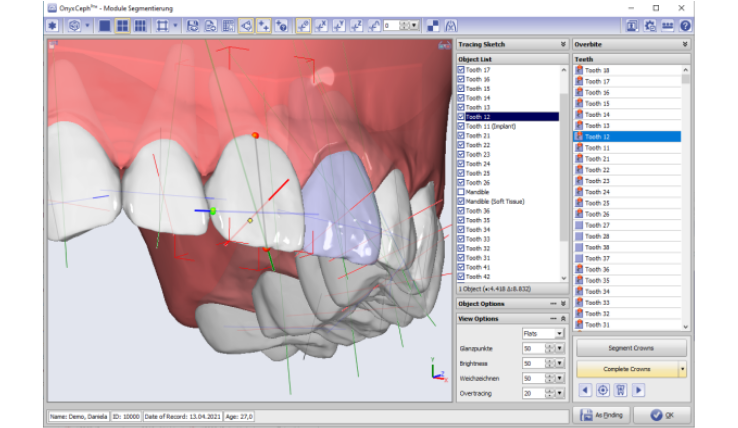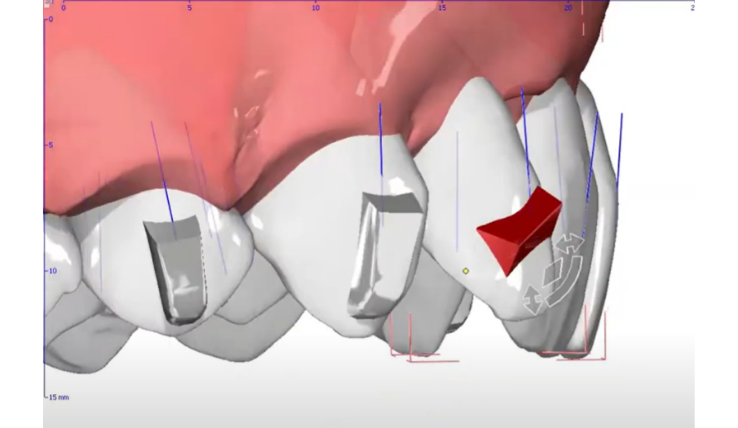Rotating molars with clear aligners has always been a challenge. These teeth are large, multi-rooted, and naturally resistant to movement, which often makes traditional single-attachment approaches unpredictable.
A more reliable solution lies in using a dual attachment strategy—placing one attachment on the buccal side and another on the lingual side of the molar. Together, these attachments create what we call a couple force system, allowing for pure rotation around the tooth’s center of resistance without unwanted tipping. This method is especially effective for rotations greater than 10 degrees, where traditional approaches often struggle to deliver consistent results.
This approach also highlights the importance of accurate clinical execution. Attachments must be bonded with precision to ensure they perform as planned. Even small errors in placement can affect the couple force system and reduce efficiency. That’s why combining good digital planning with careful chairside implementation is essential for consistent success.
Another key factor is patient compliance. As with any aligner treatment, the best-designed plan only works if patients wear their aligners as prescribed. Educating patients about the role of attachments and how they contribute to movement helps build trust and improves cooperation throughout treatment.
When executed properly, the dual attachment approach gives practitioners greater control over molar rotation, reduces the need for auxiliary mechanics, and leads to more consistent results for patients.

Latest Articles
All Articles
Essential Tips for Precision in Dental Segmentation
In digital orthodontics, small errors create big problems. Misplaced mesial or distal points during segmentation can compromise spacing, movement, and aesthetics. This post shows how to avoid the pitfall, improve IPR, and achieve predictable, balanced results across OnyxCeph, Nemocast, or Arcad.


Mastering the PIR Protocol: My Sequential Approach to Class II Division 2 Treatment
Class II Division 2 malocclusion is complex, with retroclined incisors, deep bite, and vertical challenges. The PIR protocol—Procline, Intrude, Retract—offers a clear sequence to manage these cases with stability and precision. Read how to optimize biomechanics, avoid pitfalls, and achieve predictable long-term outcomes.

.png)